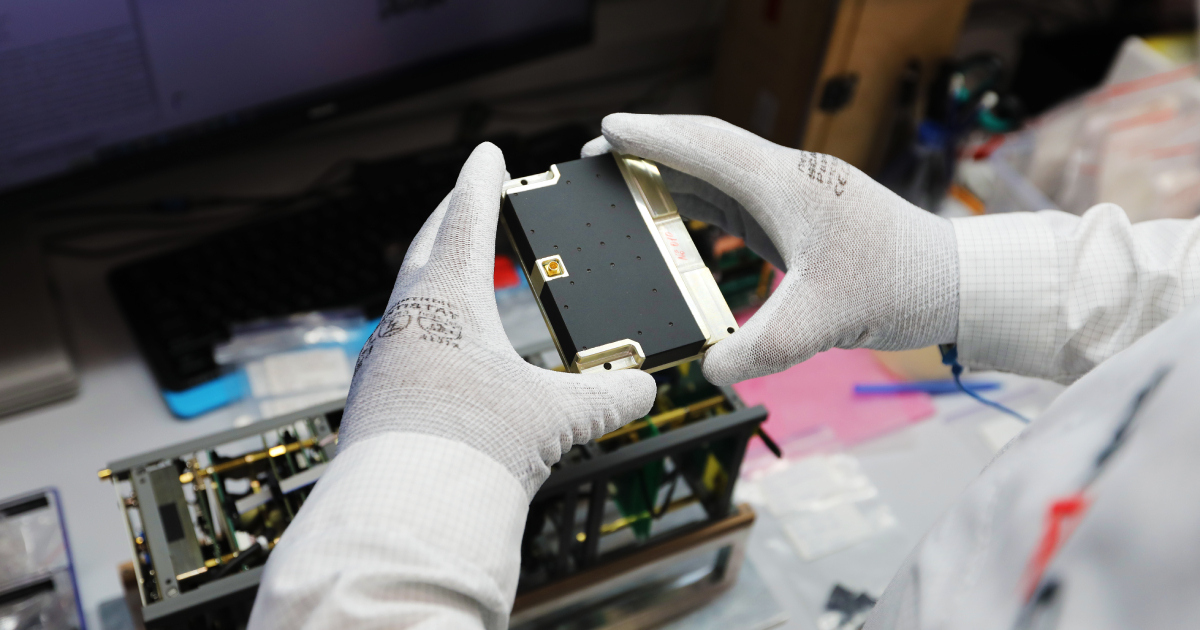Geoscan specialists have developed in-house high-speed radio transmitter device titled COMMX (for X-Band Communication). This new product enables data transmission from small spacecraft to Earth at data rate of up to 200 Mbps, using the 10.45 GHz amateur radio band.
The communication system is a critical component of a satellite, comprising all available transceiver devices. These devices typically operate in various frequency bands and, together with the ground segment, form communication channels. Previously, data from Geoscan satellites was transmitted via a low-speed bidirectional channel at a frequency of 435 MHz and a data rate of 9.6 kbps. With the new high-speed COMMX transceiver, data can now be sent to Earth hundreds of times faster. For instance, downloading this short video of the StratoSat TK-1 launching micro CubeSats, approximately 3 MB in size, took our staff a couple of weeks in July 2023. With the new data link, this would have taken less than a second!
The new development integrates various areas of electronics, including ultra-high-frequency electronics, high-speed circuits, and FPGA. The device operates in the DVB-S2 standard, which has proven its effectiveness in satellite TV and has since been adopted for space communication, capable of transmitting any type of data. The standard defines types of modulation and data coding, and the use of channel error correction LDPC code brings the data rate close to its theoretical limit.
“Radio communication technologies have reached a very high level of development over the last decades. Communication channels operating in the DVB-S2 standard are now commonplace. However, few organizations produce such devices, and their cost is relatively high. One of Geoscan’s strategies is to expand our knowledge and accumulate experience, which is why we were keen to develop COMMX in house,” says Dmitry Borovitsky, Head of the Small Spacecraft Development Department.
The compact high-speed transmitter was specifically designed for the Geoscan 3U satellite platform, but the technology can be applied to the company’s other projects.
“Five educational CubeSats built by Geoscan are scheduled for launch later this year. Our university customers have developed intriguing scientific and technological payloads for these satellites. Some space experiments, such as hyperspectral imaging of the Earth, will require large amounts of data to be transmitted from orbit, necessitating a high-speed transmitter. COMMX is especially vital for the “Lobachevsky” spacecraft under development by Nizhny Novgorod State University, which is based on our new satellite platform – Geoscan 16U. This will be our first full-fledged remote sensing device developed for agroecology tasks across various regions of Russia. The satellite will capture high-resolution images of forests, fields, and crops, which will then be sent to Earth for research by all interested organizations,” adds Alexander Khokhlov, Head of Geoscan’s Small Spacecraft Projects Department.
